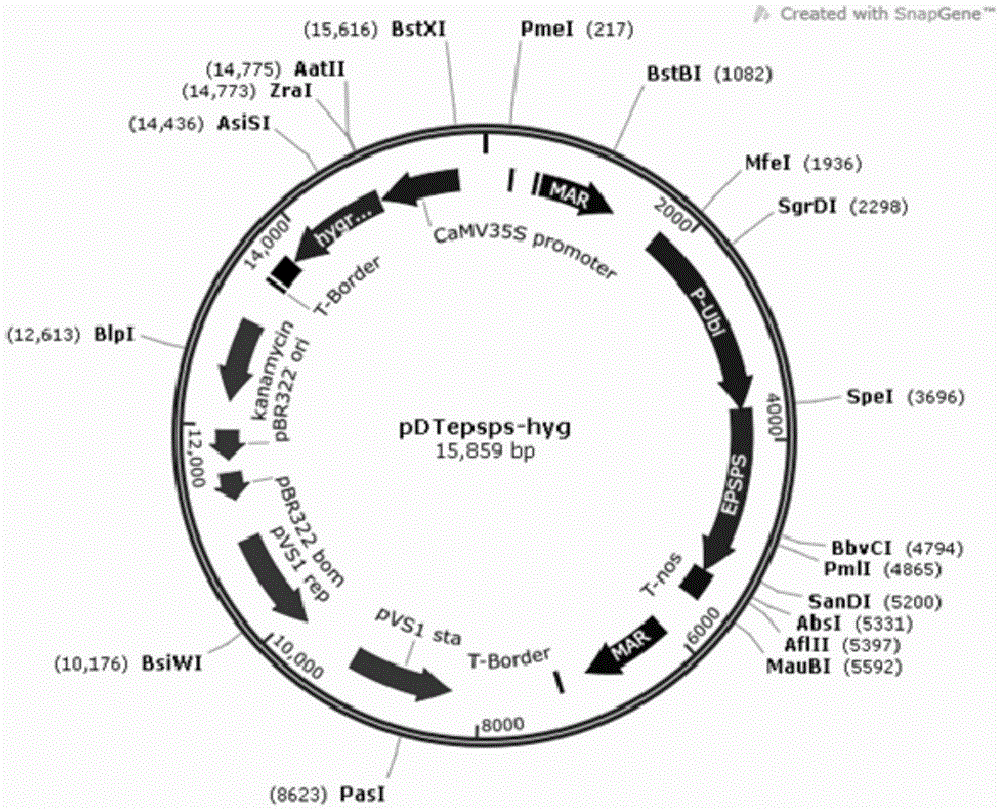Method for culturing selectable-marker-free herbicide-resistant transgenic plant and carrier special for method
A herbicide-resistant gene and selectable marker technology, applied in the biological field, can solve problems affecting the environment, human health and safety, and achieve obvious resistance effects
- Summary
- Abstract
- Description
- Claims
- Application Information
AI Technical Summary
Problems solved by technology
Method used
Image
Examples
Embodiment 1
[0069] Example 1. Obtainment of glyphosate-resistant transgenic rice without selection marker and identification of glyphosate resistance
[0070] 1. Construction of plant expression vector pDTepsps-hyg
[0071] Artificially synthesized plant expression vector pDTepsps-hyg (circular plasmid, shown in sequence 1 in the sequence table) figure 1 ). In Sequence 1 of the Sequence Listing, positions 491-516 from the 5'end are the right border B sequence, positions 563-1309 are the first MAR sequence, positions 1797-3707 are the P-Ubi promoter sequence, and positions 3708 -5351 is the EPSPS gene sequence, 5358-5620 is the T-nos terminator sequence, 6045-6906 is the second MAR sequence, 7182-7207 is the left border B sequence, 13458-13483 is The left border A sequence, positions 13533-13748 are the CaMV35SpolyA terminator sequence, positions 13777-14799 are the hpt gene sequence, positions 14835-15604 are the CaMV35Spromoter sequence, and positions 251-276 are the right border A sequence....
PUM
 Login to View More
Login to View More Abstract
Description
Claims
Application Information
 Login to View More
Login to View More - R&D
- Intellectual Property
- Life Sciences
- Materials
- Tech Scout
- Unparalleled Data Quality
- Higher Quality Content
- 60% Fewer Hallucinations
Browse by: Latest US Patents, China's latest patents, Technical Efficacy Thesaurus, Application Domain, Technology Topic, Popular Technical Reports.
© 2025 PatSnap. All rights reserved.Legal|Privacy policy|Modern Slavery Act Transparency Statement|Sitemap|About US| Contact US: help@patsnap.com



